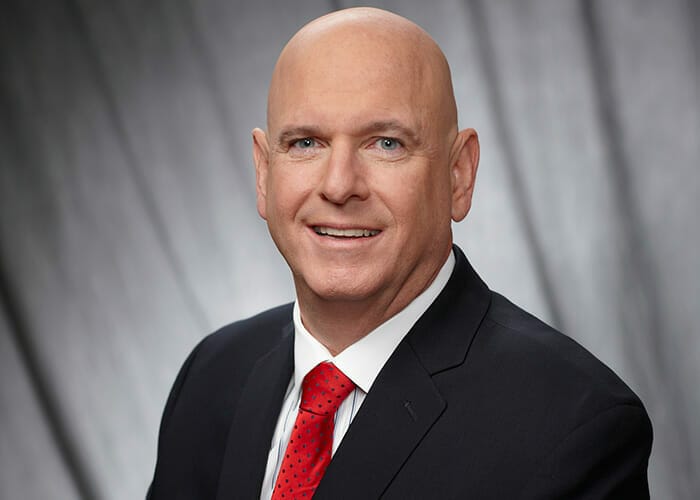The $188.8 billion California State Teachers Retirement System, CalSTRS, will decide next April whether or not to divest from non-US thermal coal. The giant US fund only has a small exposure to emerging market coal, but the decision, which would follow on from the fund divesting from US thermal coal, and investing in a low carbon index strategy earlier this year, isn’t straightforward.
“We are conducting a deep dive into our non-US thermal coal holdings, but you have to consider the human issues as well as the climate issues in emerging market coal. In countries like India, there are so many people without electricity that without coal they will burn wood and dung, which is often worse than coal. There are two sides to the argument,” observes chief investment officer, Christopher Ailman, speaking from the fund’s Sacramento headquarters.
The decision to jettison US coal assets was easier, consistent with both the fund’s fiduciary duty and the changing regulatory landscape in the US.
Divestment in the US was limited to CalSTRS passively-held equity index portfolio and fixed income securities; active managers had mostly chosen not to own US coal in recent years.
CalSTRS further pushed its low carbon strategy this year when it committed up to $2.5 billion to low-carbon strategies in US, non-US developed and emerging equity markets.
The passively managed portfolio will be invested in an index designed to have significantly lower exposure to carbon emissions than the broad market, and a nearly complete reduction in exposure to fossil fuel reserves.
The MSCI ACWI low-carbon target passive index portfolio will be internally managed with implementation phased in, beginning with US equity, followed by developed markets and then, eventually, emerging markets.
Hedge funds for risk mitigation
The fund, which invests assets for nearly 896,000 active and retired school employees, is also in the process of introducing more risk mitigation into the portfolio through hedge fund strategies.
A new allocation to ‘risk mitigating strategies’ (RMS), will specifically target “less correlation to global growth,” smoothing volatility as the fund matures.
“We are a mature fund and we pay out more in benefits than what we receive in contributions. It means we care a great deal about the downside. We can’t ignore the low interest rate environment we’re in today, so we have to recognise that fixed income does not serve our purpose,” says Ailman.
The allocation will comprise four different strategies because “there is not one security you can buy to mitigate risk; you need to buy a basket.”
The components include long treasury bonds; trend following strategies; global macro and systemic risk premia.
In all, between 50 to 55 per cent of the allocation will be allocated to hedge funds. The whole strategy will account for 9 per cent of fund assets and the money will come out of fixed income and the global equity allocations, he says.
The bid to reduce risk comes as CalSTRS continues to be battered by volatility in a portfolio characterised by a 56.6 per cent allocation to global equity, as of the end of August 2016. The fund returned 1.4 per cent last year, due particularly to a poor performance in stocks.
The best performances came from real estate and fixed income which returned 11.1 per cent and 5.7 per cent respectively. Private equity, which currently accounts for 8.3 per cent of assets under management, also disappointed, returning 2.9 per cent, 1.7 per cent below CalSTRS custom internal benchmark.
“We think long-term, and the economy ebbs and flows. The US has been so strong for the last five years, it is not surprising there has been a pause,” says Ailman.
He also points to the funds three-year and five-year net returns at 7.8 per cent and 7.7 per cent respectively; CalSTRS has a target average return of 7.5 per cent over time.
Fee crackdown
Enduring investment themes include continuing to strengthen the fund’s internal teams, although Ailman says allocations to emerging markets, some private equity, and real estate will remain with managers.
Around 60 per cent of assets are currently internally managed. He is also keeping a keen eye on fees. CalSTRS says its fees come in at 30.8 basis points, meaning for every $100 it invests, it costs around 31 cents.
“The value-add has to exceed the fees you pay. Outperformance is inconsistent, hard to find and not easily repeatable. I’ve been in this business for 30 years and I thought fees would have come down by now, but Wall Street has just gotten cleverer at introducing new products that have a higher fee. Investors are focused on the net result and are willing to pay the fees if they are achieving a superior return net of fees. The problem is they pay first and wait; it’s not fun.”
Ailman plays down the outcome of the US presidential election on the pension fund, stressing again CalSTRS’s long-term outlook. Although he does ponder on one of the longest election processes in the world.
“Friends in Canada have pointed out that they held their country’s election, and reorganised their government, in less time than what we took to just run the primaries.”



